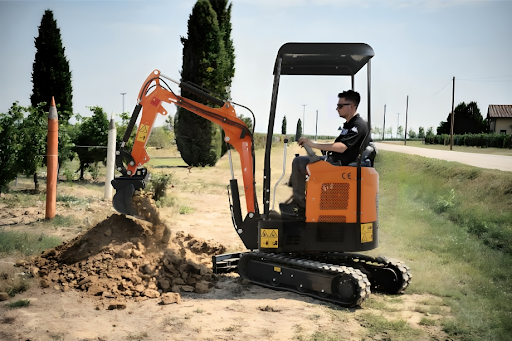On any job site, safety is paramount. The operation of heavy machinery, like mini excavators, introduces potential hazards that demand careful attention and strict adherence to safety protocols.
In the United States, construction sites see a significant number of accidents each year, many of which could be prevented with proper safety measures.
It’s essential to understand that prioritizing safety not only reduces the risk of accidents but also promotes a safer working environment for everyone involved.
This article aims to provide essential safety tips and highlight key safety features that should be observed when operating mini excavators.
Personal Protective Equipment (PPE)
Wearing the appropriate Personal Protective Equipment (PPE) is the first line of defense against potential injuries. Each piece of PPE is designed to protect specific parts of the body, and neglecting to wear it can significantly increase the risk of serious harm. Essential PPE includes:
- Hard Hat: Protects the head from falling objects and impacts.
- Safety Glasses: Shields the eyes from dust, debris, and potential chemical splashes.
- Gloves: Provide hand protection from cuts, abrasions, and chemical exposure.
- Steel-Toed Boots: Protects feet from crushing injuries and punctures.
- Reflective Vest: Enhances visibility, especially in low-light conditions or busy worksites.
- Ear Protection: Use ear protection to reduce your exposure to loud noises from machinery.

Training and Familiarization
Proper training is crucial for both new and experienced operators. It ensures that everyone is well-versed in the safe operation of the machinery and understands the potential hazards. Training programs should cover machine operation, safety protocols, and emergency procedures. Operators must also familiarize themselves with the specific mini excavator they will be using, such as a high-quality Creworks mini excavator, understanding the controls and capabilities before commencing any work.
Work Area Inspection
Before operating a mini excavator, thoroughly inspect the work area to identify and mitigate potential hazards. The work area should be clear of obstacles, debris, and any obstructions that could impede safe operation. Pay special attention to the terrain, checking for slopes or uneven spots that could pose a safety risk. It’s also critical to identify and mark any underground utilities to avoid accidental damage.
Safe Operation Practices
Adhering to safe operating practices is essential for preventing accidents while using mini excavators. These practices include:
- Blade Extensions: Ensure that blade extensions are properly monitored and positioned according to the mini excavator’s weight and the stability of the terrain.
- Bucket Positioning: Keep the bucket close to the ground when transporting loads to maintain stability and prevent rollovers.
- Driving Speed: Always drive at a safe speed, especially when navigating rough terrain or carrying heavy loads. On roads, always use an escort vehicle to ensure safety.
- Slope Navigation: Avoid driving diagonally on hills, and make small, controlled steering adjustments when changing directions on sloped surfaces.
Safety Features
Modern mini excavators are equipped with a variety of safety features designed to protect operators and those working nearby. These features include:
- Backup and Side-View Cameras: These cameras enhance visibility, especially in busy work environments, helping operators avoid collisions with people or objects.
- Seat Belt: Always wear a seat belt.
- Safety Interlock: The safety interlock prevents accidental movement of the excavator when the operator exits the machine, ensuring it remains stationary.
Post-Operation Safety
Once the work is complete, it’s crucial to follow proper post-operation safety procedures:
- Bucket Placement: Ensure that the bucket is resting on the ground before turning off the excavator to prevent any accidental movement.
- Parking Location: Park the machine on a level surface to prevent rolling, and engage the parking brake.
- Safety Switch: Lock the safety switch to prevent unauthorized use and accidental start-up.
Conclusion
Operating a mini excavator safely requires diligence, training, and adherence to established safety protocols. By wearing appropriate PPE, conducting thorough work area inspections, following safe operating practices, and utilizing available safety features, operators can significantly reduce the risk of accidents and create a safer working environment for everyone. Remember, safety is not just a set of rules to follow, but a mindset that should guide every action on the job site. Emphasize that safety is everyone’s responsibility on the job site and that everyone should look out for each other. By prioritizing safety, we not only protect ourselves but also ensure the well-being of our colleagues and the success of our projects.







